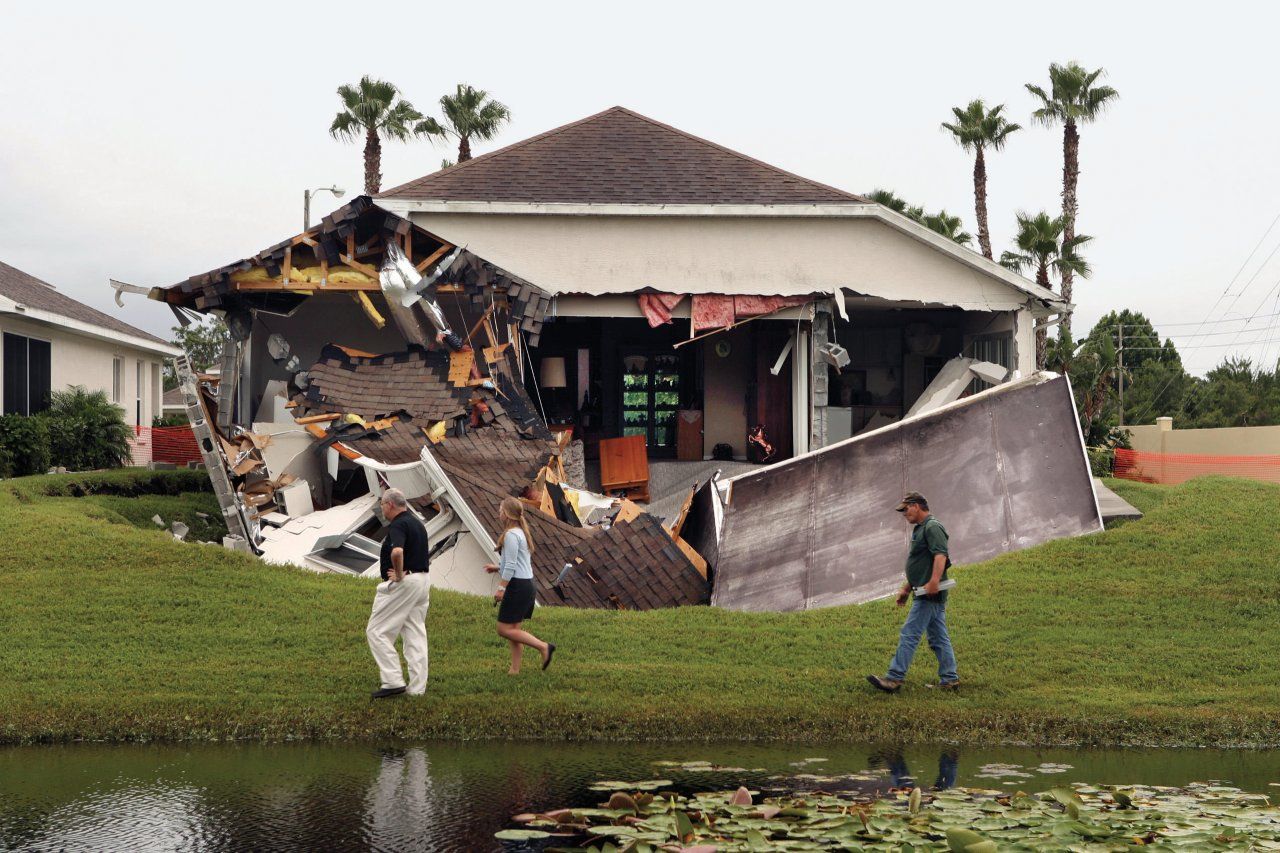
Jeff Bush, a resident of Tampa, met a chilling fate the night of February 28, when he was swallowed up by a giant sinkhole. The suddenness and randomness of the event, as well as its geologic brutality, conjured up a disturbing sense of Old Testament retribution.
That the tragedy would occur in Tampa, however, is no surprise. Bush's house was in an area of Florida referred to as Sinkhole Alley, although sinkholes occur throughout the U.S. and in just about every country worldwide. Many lakes and ponds are actually sinkholes now filled with water; the swamps of Florida, beloved by gators and bird watchers alike, are a variation on this—a place where surface water and groundwater meet.
Florida develops more than 100 new sinkholes a year, and many Southern states follow close behind. As a true measure of the extent of the problem, Florida has a squadron of lawyers who specialize in sinkhole reparations. Texas has taken a different approach: there, Devil's Sinkhole, which plunges 150 feet down, is protected state and federal land (and home to millions of Brazilian free-tailed bats). Sinkholes vary in size and depth: some run two football fields deep and resemble nothing so much as a moon crater.
According to the U.S. Geological Survey, Florida is particularly susceptible for two reasons: First, it's the fifth-rainiest state in the country. All that surface water seeps through saturated soil into subterranean groundwater, where it joins vast channels that flow invisibly beneath Floridians' feet. There's an entire science-fiction-ready world down there, complete with currents and caves. The same groundwater, friend of the parched farmer looking to dig a well, can, over geologic time, slowly erode the rock above and below. And in Florida, the bedrock is soft: like 20 percent of the U.S., the Sunshine State sits atop bedrock that is easily gnawed away.
The same phenomenon—the drip-drip-drip of water over eons—gave us the glorious Carlsbad Caverns. But in Florida, the porous limestone becomes pockmarked and fragile until eventually, under the weight of everything above, the cavities collapse, as happened with Bush's house. Of course, people have made matters worse by pumping out groundwater for drinking, thereby destabilizing the hidden caverns, as well as by laying leaky plumbing pipes through the soil. In addition, to protect its valuable strawberry crop from a costly freeze, Florida may pump away groundwater, further compromising the great underground.
Sinkholes were here long before we crawled out of the trees and will be present long after we have become extinct. While California has earthquakes to contend with, and Oklahoma, tornadoes, Florida must daily face both the threat and the gift of water. Every time a sinkhole happens, we are reminded of our increasingly shaky relationship with the world around us, where the ground beneath our feet may not be as solid as we think.
Kent Sepkowitz is an infectious-disease expert in New York City.
Uncommon Knowledge
Newsweek is committed to challenging conventional wisdom and finding connections in the search for common ground.
Newsweek is committed to challenging conventional wisdom and finding connections in the search for common ground.





